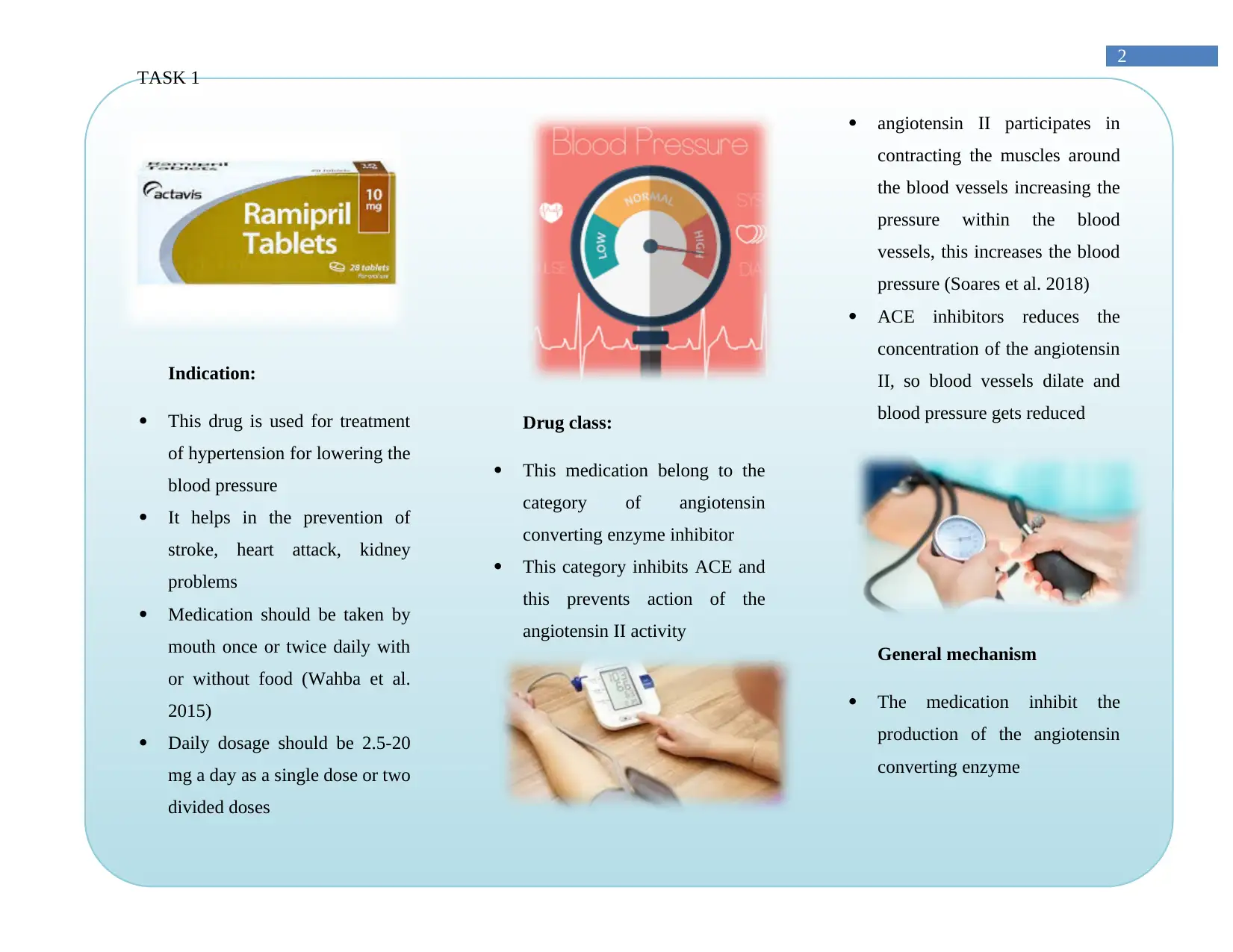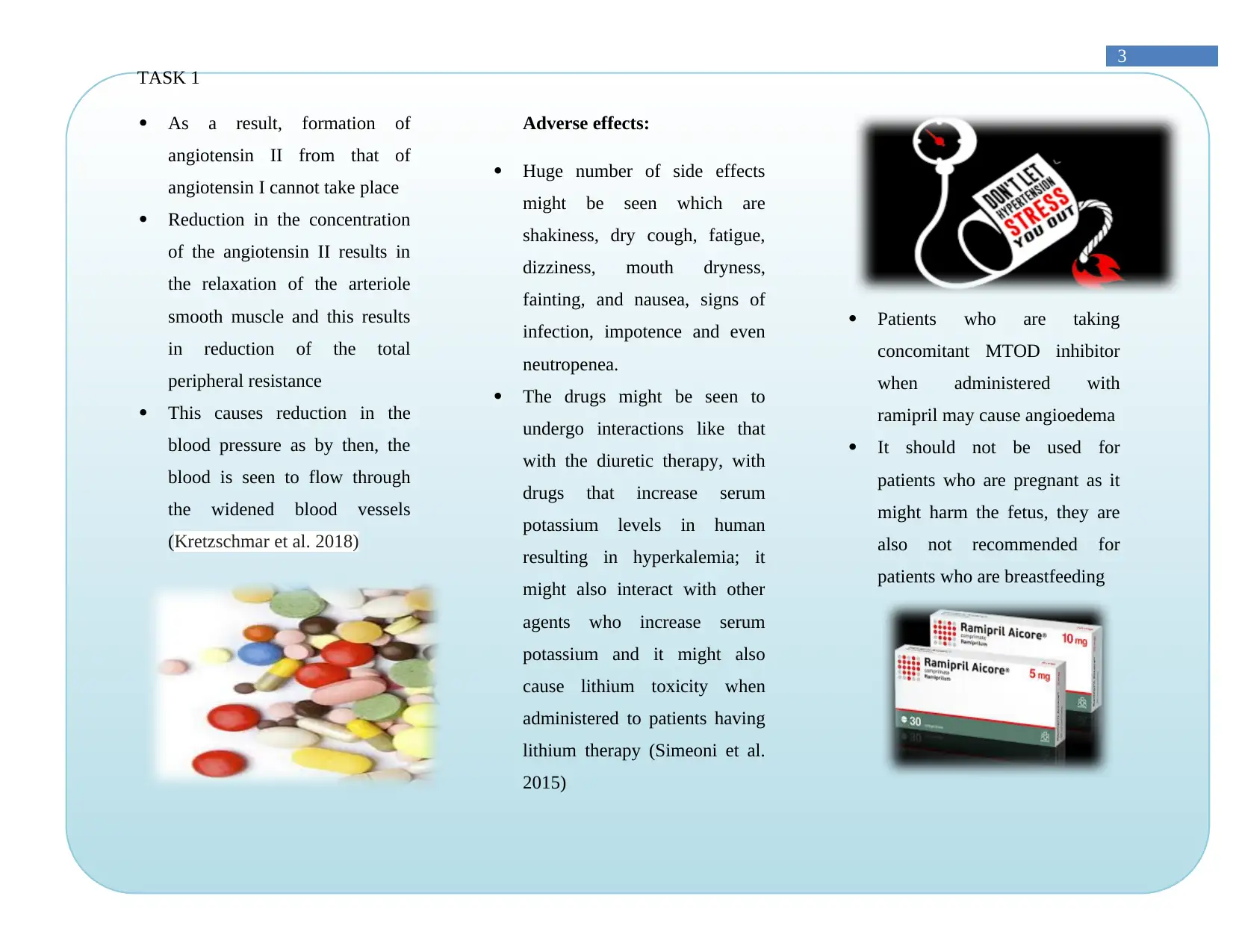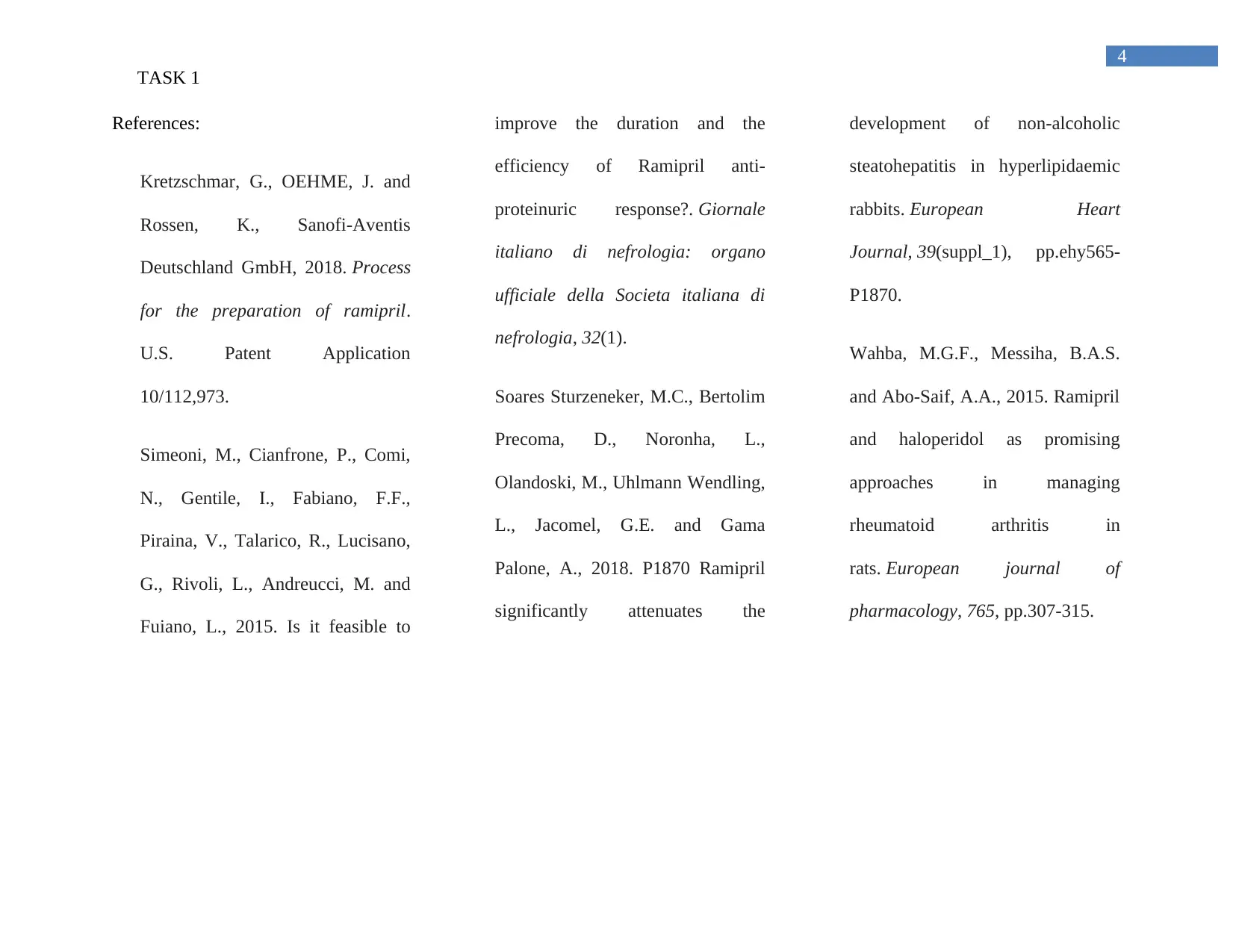MEDN2001 Assignment: Task 1 - Angiotensin II Inhibitor Pharmacology
VerifiedAdded on 2023/01/16
|4
|622
|36
Report
AI Summary
This report provides an overview of Angiotensin II inhibitors, specifically focusing on their mechanism of action, clinical indications, and potential adverse effects. The report details how these drugs, such as ramipril, function by inhibiting the angiotensin-converting enzyme (ACE), thereby reducing the concentration of angiotensin II and lowering blood pressure. It discusses the drug class, its impact on blood vessels, and its role in treating hypertension, stroke, and kidney problems. The report also covers the dosage, adverse effects like dry cough and hyperkalemia, and potential drug interactions, including those with diuretics and potassium-increasing agents. Additionally, the report highlights contraindications, such as use during pregnancy and breastfeeding. References to relevant studies are included to support the information presented.
1 out of 4











![[object Object]](/_next/static/media/star-bottom.7253800d.svg)